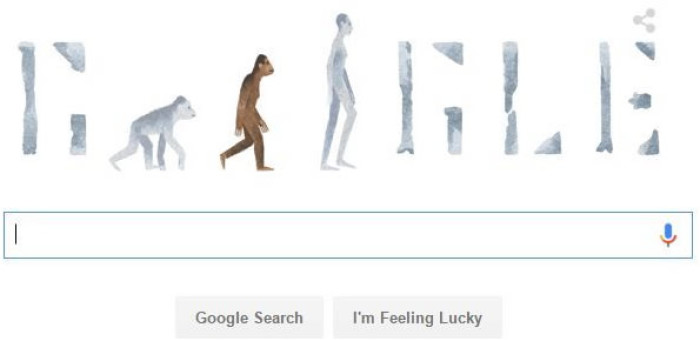Ken Ham Accuses Google of Promoting 'Atheistic Religion' With 'Lucy' Doodle

The Creation Museum's Ken Ham has accused Google of promoting what he called the "atheistic religion of naturalism" with its front page illustration of evolution on Tuesday.
Google's drawing, or Doodle, featured an illustration of "Lucy," an Australopithecus specimen considered by scientists to be an early human ancestor.
"Google Doodle highlights where our culture is headed. Our supposed evolutionary ancestry is increasingly being celebrated — but it's nothing more than a major tenet of the religion of naturalism," Ham wrote on his Answers in Genesis blog in response.
"Google isn't promoting science — they are promoting an interpretation of the past that is a key idea in the atheistic religion of naturalism. But as our culture moves farther and farther from biblical authority, we can only expect this kind of celebration of our alleged evolutionary past to continue, even creeping into the Church," he added.
Lucy's bones were found in Ethiopia in 1974, MailOnline pointed out. Close to 40 percent of Lucy's skeleton was discovered, and the major find celebrated its 41st anniversary on Tuesday.
Ham argued, however, that Lucy is not a human ancestor.
"She's just an extinct variety of ape. There is nothing about her to suggest that she's a transitional form between ape-like and human-like. It's simply an interpretation of the fossils from an evolutionary worldview," the creationist added.
Ham also took issue with Google's depiction of Lucy walking upright like a human, and argued that the specimen would not have been able to walk in such a way.
"That's an interpretation based off a reconstruction of Lucy's leg and hip bones and some fossilized footprints — clearly human footprints — found in Tanzania, far from Lucy's resting place," he added.
"Because these footprints are considered by the evolutionists to have been made too early to be humans, it's assumed that a creature like Lucy must have made them. But Lucy (and others of her species that were later discovered) had ape hips, ape shoulders, ape wrists, ape fingers, and ape toes — they didn't make those footprints," Ham said.
Donald C Johanson, the researcher who discovered Lucy's fossils near the village Hadar in the Awash Valley, has insisted that she was indeed able to walk upright.
"She showed us conclusively that upright walking and bipedalism preceded all other changes we'd normally consider being human, such as tool-making," Johnson has said.
"She gave us a glimpse of what older ancestors would look like."
Researchers believe that Lucy's valgus knee indicated that she was able to walk upright.
"Her thigh bone shows a mixture of ancestral traits such as a small femoral head, while the greater trochanter — next to the head at the top of the bone — is short and human-like. Another indication that she sits between chimps and humans is her arms," the MailOnline article described.
"The length of her humerus to femur is 84 percent, which compares to 71.8 percent for humans and 97.8 percent for chimpanzees," it added.
"Her skeleton shows Lucy had a lumbar curve — another indication she walked upright."




























